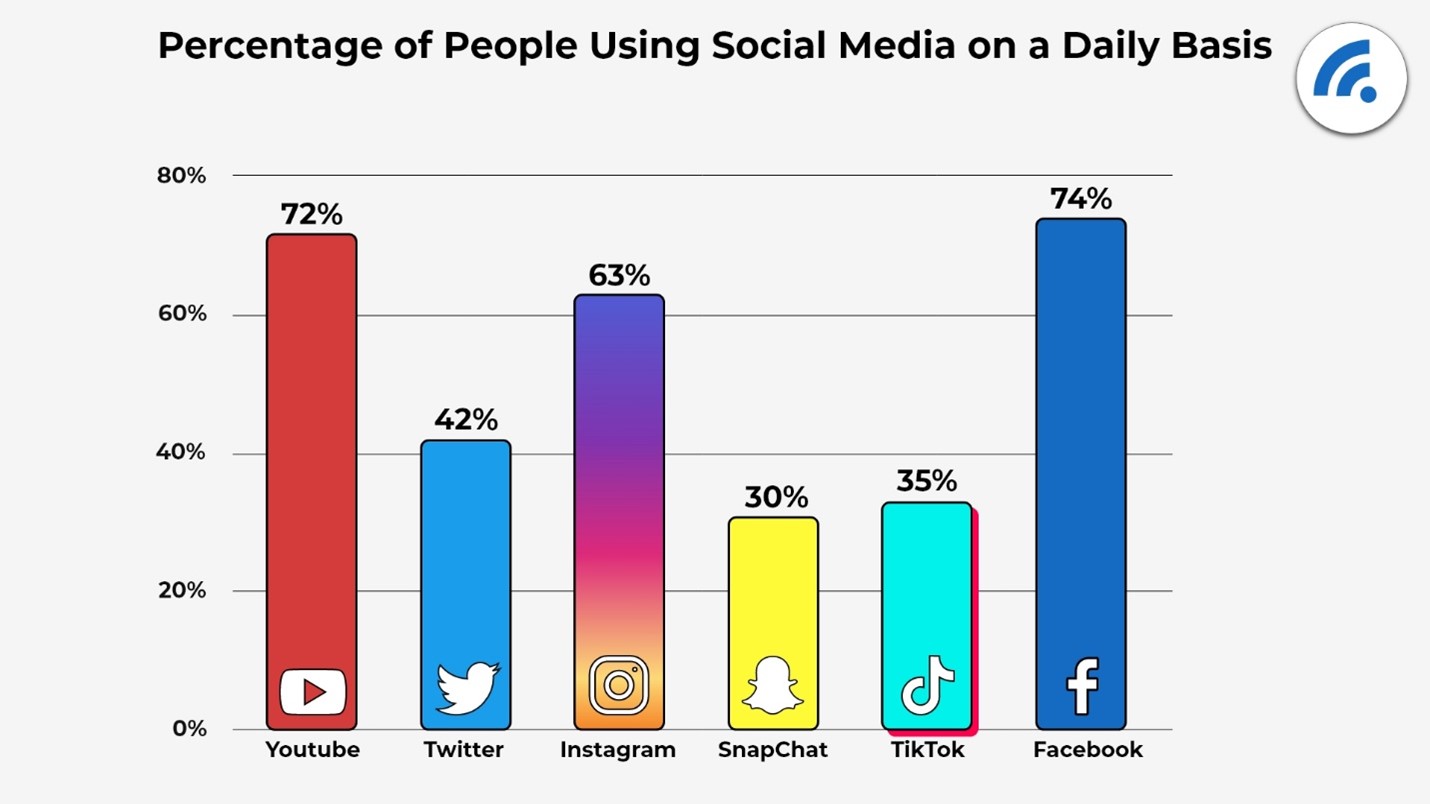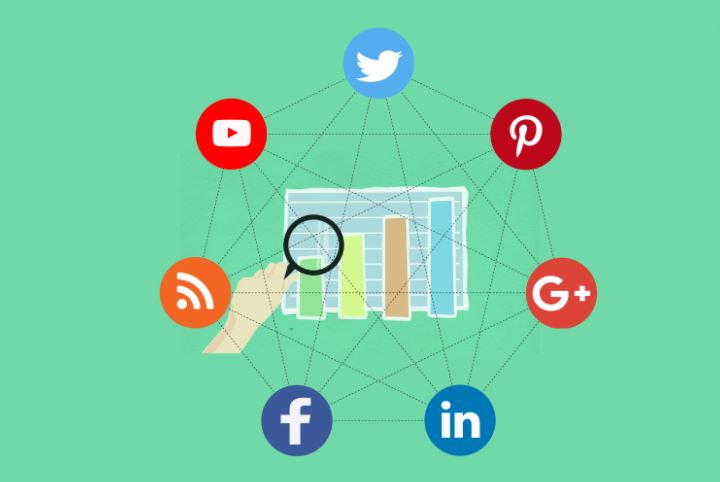In today’s digital age, social media has become an integral part of our daily lives. From connecting with friends and family to promoting businesses, social media platforms play a significant role in shaping online interactions. To understand the impact of these platforms fully, it is essential to delve into the realm of social media statistics. In this article, we will explore the top social media statistics that provide valuable insights into user behavior, engagement, advertising, and future trends.
Importance of Top Social Media Statistics

Before we dive into the statistics, let’s understand why social media data is so crucial. Social media statistics help marketers, businesses, and individuals gauge the performance of their online presence, develop effective strategies, and improve user engagement. By analyzing these numbers, one can make informed decisions to enhance their reach and relevance in the digital landscape.
Top Social Media Platforms Worldwide
-
Facebook
Facebook continues to reign as the most popular social media platform globally. With billions of active users, it offers an extensive reach for businesses and individuals alike. Understanding Facebook’s user demographics and engagement metrics can unlock immense potential for marketers.
-
YouTube
As the second-largest search engine after Google, YouTube boasts billions of hours of video content watched daily. Unraveling the video-sharing platform’s statistics can provide valuable insights into the power of video marketing.
-
Instagram
With its visually appealing interface and millions of active users, Instagram has become a hotspot for brands to showcase products and services. Exploring Instagram’s statistics can shed light on user engagement and influencer marketing effectiveness.
-
Twitter
Known for its real-time updates and viral trends, Twitter has a massive user base engaging in discussions on various topics. Analyzing Twitter statistics can help businesses improve their customer service and branding efforts.
-
LinkedIn
Targeting professionals and B2B networking, LinkedIn is a valuable platform for establishing industry connections. Its statistics offer valuable data for companies seeking to grow their professional network.
Social Media Usage Statistics
1. Global Social Media Users
Social media has become a global phenomenon, with millions of users accessing different platforms every day. Understanding the overall number of social media users can highlight the potential audience for businesses and marketers.
2. Daily Active Users
The number of daily active users is a critical metric to evaluate a platform’s engagement levels. High daily active user counts signify a platform’s popularity and potential for business reach.
3. Age and Gender Demographics
Analyzing the demographics of social media users helps businesses tailor their content and marketing strategies to suit their target audience. Understanding age and gender distribution across platforms is vital for successful campaigns.
Social Media Engagement Statistics
1. Likes, Shares, and Comments
Engaging content is the lifeblood of social media success. Measuring the likes, shares, and comments on posts reveals the level of audience involvement and sentiment toward a brand.
2. Influencer Marketing Impact
Influencer marketing has become a powerful tool for promoting products and services. Exploring the impact of influencer partnerships can help businesses make informed decisions when collaborating with influencers.
3. Brand Interaction
Social media allows brands to interact directly with their audience. Studying brand interaction statistics can aid businesses in refining their customer engagement strategies.
Social Media Advertising Statistics
1. Ad Spending and ROI
Social media advertising expenditure continues to grow as businesses invest in reaching their target markets. Analyzing ad spending and return on investment (ROI) can guide companies in optimizing their ad campaigns.
2. Effectiveness of Different Ad Formats
Various ad formats are available on social media platforms, each with its strengths and weaknesses. Understanding the effectiveness of different ad formats can help businesses select the most suitable ones for their objectives.
3. Targeting Capabilities
Social media platforms offer sophisticated targeting options for advertisers. Evaluating the targeting capabilities of different platforms can aid in reaching the right audience with precision.
Social Media and E-Commerce
1. Social Commerce Trends
The integration of e-commerce into social media has created new opportunities for businesses. Analyzing social commerce trends can reveal consumer buying behavior and preferences.
2. Conversion Rates and Sales
Understanding conversion rates and sales through social media platforms can help businesses measure the effectiveness of their online sales strategies.
Social Media and Business Growth
1. Social Media Marketing Strategies
Effective social media marketing strategies are essential for business growth. Exploring successful tactics and case studies can provide valuable insights for marketers.
2. Building a Strong Online Presence
A strong online presence is vital for brand recognition and credibility. Understanding how social media contributes to building this presence can empower businesses to establish themselves as industry leaders.
3. Customer Relationship Management
Social media serves as a platform for fostering customer relationships. Exploring best practices for customer service and support can help businesses enhance customer satisfaction.
Impact of Video Content on Social Media
1. Rise of Short-Form Videos
Short-form videos have gained immense popularity on various social media platforms. Analyzing the impact of short-form videos can aid businesses in crafting engaging and shareable content.
2. Live Streaming and Stories
Live streaming and stories have become prevalent features on many platforms. Understanding their impact on audience engagement can help businesses leverage these tools effectively.
Social Media and Influencer Marketing
1. Power of Micro-Influencers
Micro-influencers have emerged as a valuable resource for businesses seeking authentic connections with their audience. Analyzing the power of micro-influencers can guide businesses in selecting the right partners.
2. Measuring Influencer Impact
Measuring the impact of influencer campaigns is crucial to determine their success. Exploring different metrics for influencer marketing can help businesses assess their return on investment.
Social Media and Customer Service
1. Importance of Responsive Support
Timely and responsive customer service is essential on social media. Understanding the importance of providing support on these platforms can build trust and loyalty among customers.
2. Handling Negative Feedback
Negative feedback can arise on social media, and knowing how to handle it professionally is essential. Exploring strategies for managing negative feedback can help businesses maintain a positive brand image.
Social Media and Crisis Management
1. Real-time Communication
Social media requires real-time communication during crises. Analyzing successful crisis management approaches can help businesses mitigate potential reputational damage.
2. Addressing Public Relations Issues
Social media can be a battleground for public relations issues. Understanding how to address these challenges effectively can help businesses navigate sensitive situations.
Future Trends
1. Augmented Reality and Virtual Reality
Emerging technologies like augmented reality and virtual reality are set to transform social media experiences. Exploring these trends can prepare businesses for the future of digital interaction.
2. Social Listening and Sentiment Analysis
Social listening and sentiment analysis tools enable businesses to monitor brand mentions and sentiment. Understanding how these tools can be leveraged effectively can enhance brand perception.
Conclusion
In conclusion, social media statistics provide valuable insights into user behavior, engagement, advertising, and future trends. By harnessing this data, businesses and marketers can refine their strategies, enhance their reach, and build meaningful connections with their target audience.
If you’re looking to supercharge your social media marketing efforts and stay ahead of the competition, request a demo from AIM Technologies today! Our cutting-edge tools and solutions will empower you to make data-driven decisions, optimize your campaigns, and achieve remarkable results in the world of social media.
FAQs
- What are social media statistics?Social media statistics refer to the data and metrics that showcase various aspects of user behavior, engagement, advertising performance, and trends on social media platforms.
- How can businesses benefit from social media statistics?Businesses can benefit from social media statistics by gaining insights into their audience, refining marketing strategies, measuring ad performance, and enhancing customer engagement.
- Which social media platform has the most active users?Facebook boasts the most active users among all social media platforms, making it a prime channel for businesses to reach a broad audience.
- How can influencer marketing impact brand growth?Influencer marketing can significantly impact brand growth by leveraging the credibility and reach of influencers to promote products and services to a highly engaged audience.
- What are some future trends in social media?Emerging trends in social media include the integration of augmented reality and virtual reality, as well as advancements in social listening and sentiment analysis tools for better audience insights.


